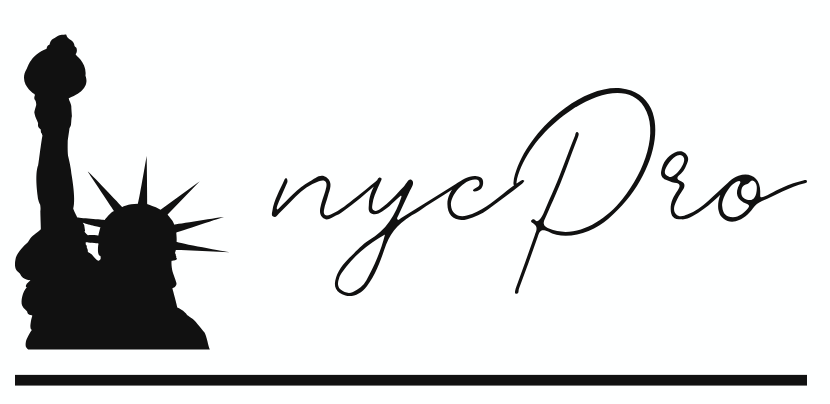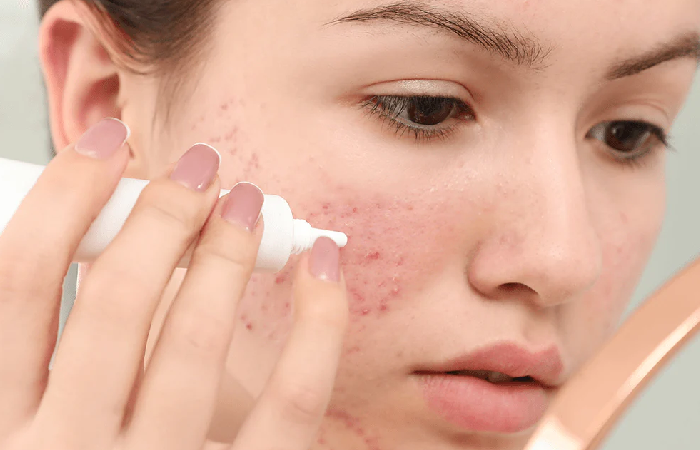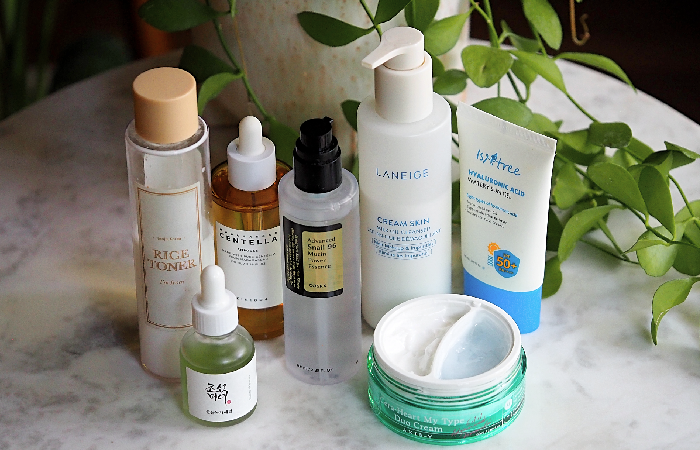Taper vs Fade: Which Haircut is Right for You?
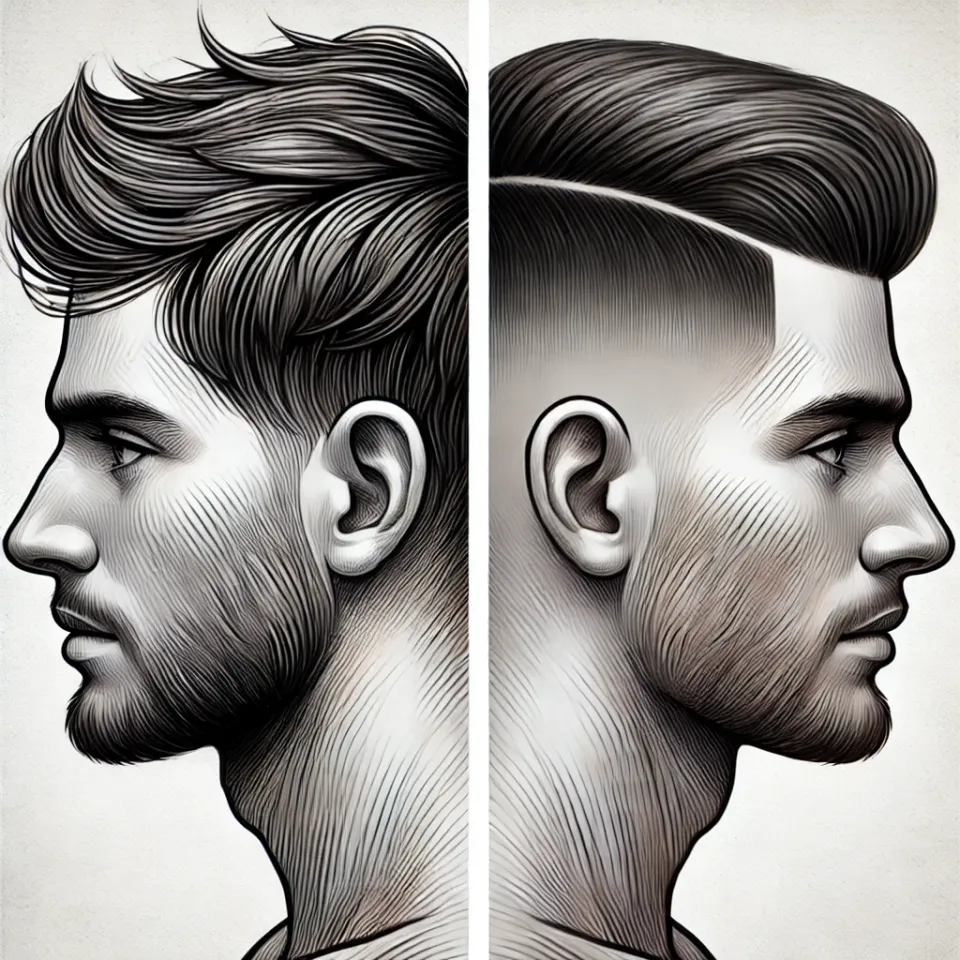
Are you thinking about choosing a taper or a fade for your next haircut? Just imagine sitting in a barber's chair, thinking about what will be better for your look and style. Choosing between taper and fade can create much difference in the overall look and confidence exuded by a person. But how do you determine which one is the perfect match for you? In this detailed guide, we will dissect the differences between taper and fade haircuts so that you have no problem negotiating the confusing world of men's grooming. From understanding evident characteristics of each style to finding out which one fits better with the shape of your face and type of hair, we have all your bases covered right here. The key takeaways we will discuss include:
- Learn the fundamental differences between taper and fade haircuts.
- Professional advice for selecting the most appropriate haircut to match your individual personal style.
- Solid guidance on styling and maintaining your chosen hairstyle so it remains sharp and fresh.
Come along with nycPro; let's unlock the secrets of the taper versus the fade haircuts and effortlessly raise your grooming game-high.
Introduction to Men's Taper vs Fade Haircuts
Men's Taper and fade haircuts have been so popular with gentlemen over the last couple of years. These two styles give a stylish and versatile appearance to any man with just about any type of hair and facial structure. This guide will take you through the difference between taper and fade haircuts so you can easily decide which one you want.
Haircuts take a vital role in one's overall grooming and bring dramatic changes to a person's looks. So, whether you like the sound of a more gradual taper or a sharp fade, let's look at the difference between these two haircuts. This article describes in detail the differences between taper and fade haircuts and helps you communicate the desires you have to your barber. With the help of this guide, you can easily distinguish between the two, get to know the advantages each provides, and learn how you can pick the right haircut for your type of hair, face shape, and the time you are ready to spend on its maintenance.
So prepare to discover the world of men's taper and fade haircuts—this guide will head you toward your perfect style that fits your unique personality and lifestyle.
What is a Taper Haircut?
A tapered haircut is one of the most typical styles for men, where the length reduces from the top down to the base of the neckline. It is made to form a gentleman's neat and brilliant appearance with a sleek transition line between longer and short hair. The best thing that makes tapers uniquely versatile is their adaptability to almost all head types and facial contours. Unlike the other haircut styles—fades or undercuts—a taper does not gain very much contrast in length. Instead, they are focused on getting an outlook that is somewhat cleaner and well-blended. Taper haircuts are classic and timeless for all formal and casual settings.
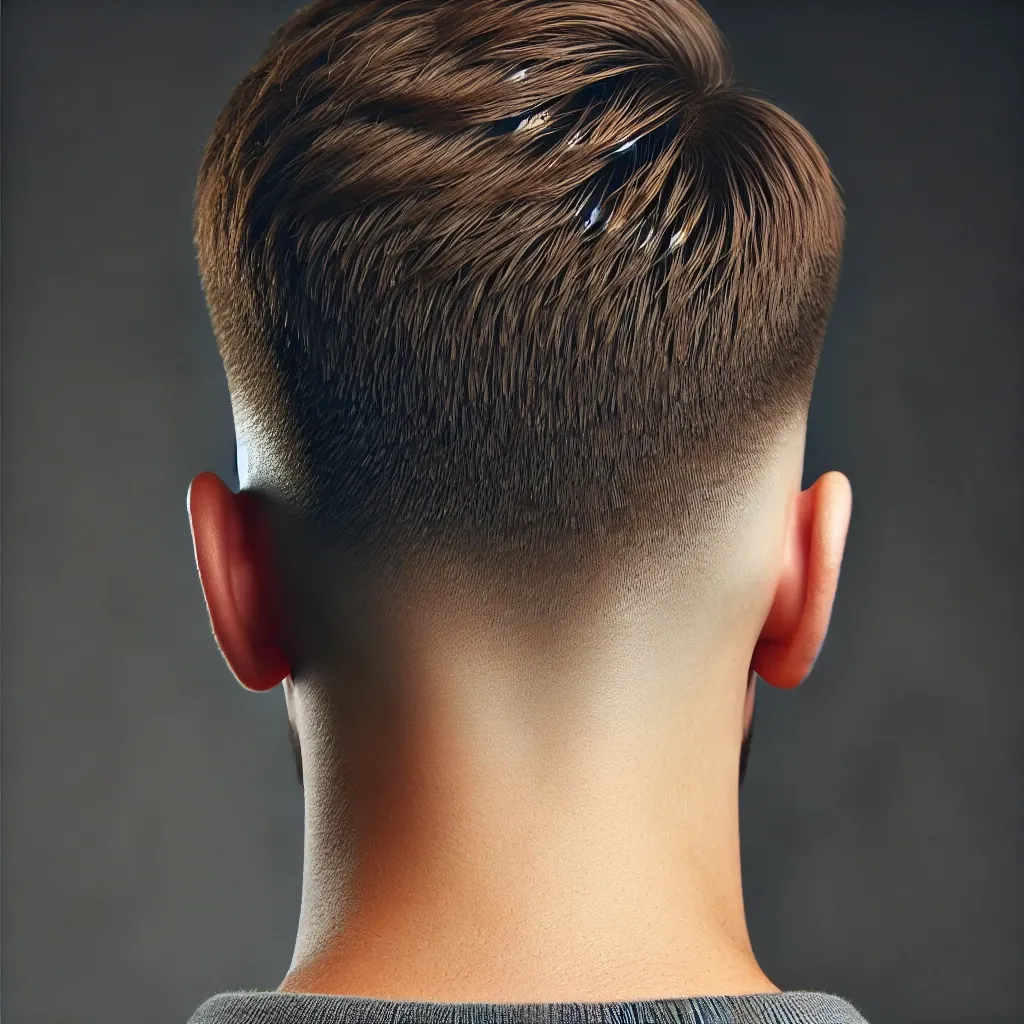
Types of Tapers on Haircuts
There are different types of tapers on a haircut that you may need to consider. Each type would provide a distinct look, and one might be better for a particular hair type or face shape. Some of the famous taper haircut examples include:
1. Low Taper
A low taper is an understated yet classy haircut that subtly tapers down the length of the hair on the sides and back. It provides a neat and clean look, appropriate for both formal and informal settings. The low taper suits men with finer hair or who want to look more conservative.
2. High Taper
If you are looking at getting a more extreme taper, then a high taper will be more your style. This cut is very similar to the previous one but with a more noticeable fade starting up higher on the sides and back. It is edgier and brings out a bolder feel in the hairstyle, making it suitable for those who want to make a statement.
3. Mid-Taper
A mid-taper haircut, as the name suggests, falls between the low and high taper haircuts. This means that, basically, the haircut provides a balanced and versatile look that will fit all types of face shapes and hair textures. The mid-taper gives a clean and polished look without getting too short at the back and sides.
4. Skin Taper
If the preference is for a slick look, then there is no option other than the skin taper. Cutting hair extremely close to the scalp blends the style into the skin. This haircut of a skin taper makes it look hard and clean but then needs much maintenance to ensure freshness.
5. Side-Part Taper
For this, the side part offers much more of a classic and sophisticated flavor. A side part could be distinguished and slowly faded to the sides and back with this cut. It is a timeless and elegant look that can be worn for both formal looks and regular attire.
Your personal style, hair texture, and face shape will all play an essential part in your decision to get a taper haircut. That said, consulting with a professional barber will be very helpful in letting you know the kind of taper that best suits you.
Remember, with either type of taper, proper maintenance between cuts and styling techniques are your best ways of ensuring a clean cut.
What are Fades?
Fade haircuts are the most preferred contemporary style for men to look sharp. This haircut is characterized by fading hair from long lengths on the top of the head down to the neckline and sides, creating a clean transition line. The fades have a close-cropped appearance, with the hair gradually reducing in length as it nears the skin. This gradual fade gives off an immaculate and crisp look that can be versatile and flattering to several different hair types and face shapes. Fades create a more edgy and clearly defined look than a taper haircut, so they are the choice of many for a much bolder and modern haircut.
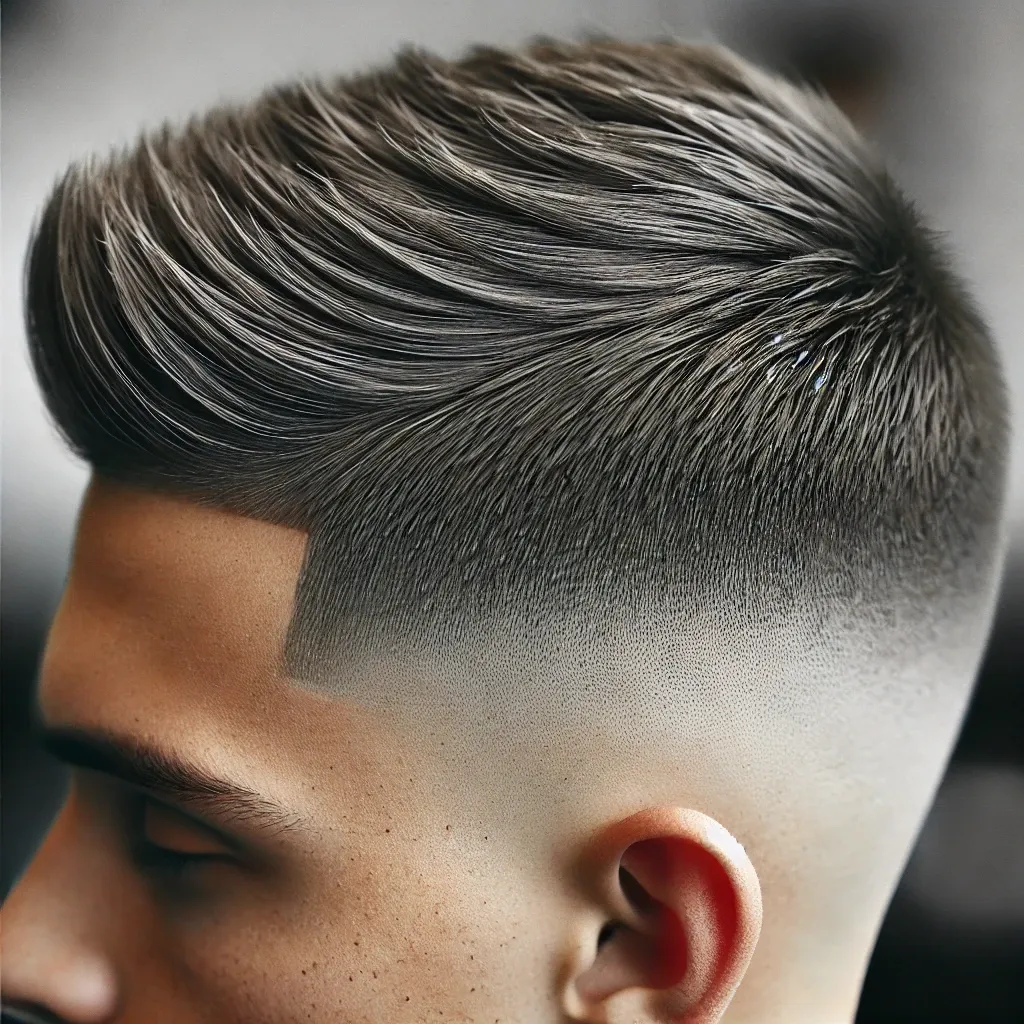
Types of Fades
Fades are another famous men's haircut style that offers a more closely cropped look compared to tapers. The fade category is home to an array of types, each with its distinguishing features. Now, we will look at the various types of fades and give descriptions and tips for each.
1. Low Fade
The low fade haircut is a technique that involves a subtle tapering of the hair on the sides and back. It starts just above the ears and tapers down towards the neckline. This type of fade is very versatile and can be completed with different hair lengths and textures. It looks nice and polished, which could be perfect for a formal or casual appearance.
2. High Fade
A high fade contrasts a low fade by starting much higher on the head. The hair is tapered extremely short, close to the scalp, which results in a more prominent contrast between the lengths of the hair up top and the closely trimmed sides. It provides that edgy touch to your look and is hence much loved by the trendiest people and lovers of an ultramodern style.
3. Skin Fade
A skin fade is more or less an extension of the fade, wherein the hair is shaved right down to the skin on the sides and back. This provides a perfect, smooth transition from a longer top to the exposed skin. It is the reason this haircut comes across as very neat and defined, making it one of the best hairstyles for those who wish to look slick and modern.
The perfect fade haircut is chosen concerning factors such as your hair texture, face shape, and personal style preference. Getting a consultation with a good barber may also assist in getting the proper fade that completes your features and boosts your appearance. Do not forget to bring reference photos to ensure clear communication with your barber and achieve the desired fade haircut.
Taper vs Fade: How to Choose
In fact, quite a bit goes into making the choice between a taper vs fade haircut to get the proper cut for your hair type, face shape, and desired level of maintenance.
Hair Type
When choosing between taper and fade, consider your hair type. A fade haircut is best for thicker hair because it gives that closer-cropped look. If you have finer hair, on the other hand, you better opt for a taper haircut as it helps in adding texture and dimension, which makes your hair appear fuller.
Face Shape
The shape of your face is essential in determining the best haircut to suit you. For instance, when the face is round, a fade will add length, and when round, a taper will add structure. If your face is more angular, a fade emphasizes your facial features.
Maintenance Level
Consider the level of maintenance that you are eager to work with. Fades usually require regular touch-ups because they get blunt quickly. Tapers allow you also to grow the hairstyle out better.
Remember, good communication with your barber and some reference photos never hurt. By thinking about your hair type, face shape, and the level of maintenance you can handle, you can dial into a taper or fade haircut that suits your style and taste.
How to Talk to Your Barber?
Proper communication with your barber is critical when deciding on a taper or fade haircut. You will be able to say what exactly you would like done and how you would like it done, down to the very inch, by setting up the expectation through the right words and then backing that up with reference photos. Here are a few ways to communicate better with your barber:
1. Bring reference photos
Photos can be much more illustrative of the taper or fade style you're going for. Do some research and either bring in pictures of celebrities or models with that same haircut or show an image you found online.
2. Describe your desired haircut using precise terms:
Even when you don't know the technical term, just explain further what general look you would like to get. For instance, if you want a gradual blend, say that you are looking for a natural taper.
3. Consult your barber
Barbers are professionals with good hands in giving advice and suggestions according to the texture of your hair and the shape of your face. Don't be scared to ask for their recommendations about the best style for you.
4. Communicate your maintenance preferences
Consider how much time and effort you will dedicate to maintaining your haircut. In case you prefer low-maintenance styles, then point this out to the barber so that they can suggest a proper taper or fade that suits your needs.
Remember, effective communication is critical to achieving the perfect taper or fade. This way, through sharing thoughts and ideas, listening to your barber's expert views, or even providing some references, you can be confident that it will end well and walk out of the barbershop or within a shopping mall, with much respect for your new haircut.
FAQs
Here are some of the frequently asked questions that come to one's mind when it comes to men's taper and fade haircuts:
What is the difference between a fade and a taper?
The taper haircut is done by reducing the length of the hair gradually, moving from the top to the sides and back of the head, blending in. On the other hand, a fade is a much more dramatic style; this is where the hair is cut very short or even shaved close to the skin, which gives the hairline an even sharper and more defined look.
Can I get a taper skin fade?
Yes, it's possible to combine a skin fade with a taper. This haircut is a style of skin taper fade in which hair fades gradually from longer lengths up top to a bald or concise length at the bottom.
Which one is better, a low fade or a mid fade?
A choice between a low fade and a mid fade depends on what one prefers for one's looks. A low fade starts lower in the head, about on the level of the ears, while a mid fade starts higher at the temples. This is according to hair texture, facial shape, and styling needs; tapers or fades suit you.
Do tapers last longer than fades?
A taper and fade are very different, but one primary difference is how long they last. While both haircuts will require routine maintenance to keep the crispy look, a taper tends to last just a little longer than a fade before they need re-doing. However, this entirely depends on hair growth patterns and how one takes care of his grooming regime.
Of course, it's essential to consult with a skilled barber or stylist beforehand, discussing in detail your hair type, lifestyle, and desired look. They will be able to suggest the best haircut option based on your individual needs.
What is the difference between a fade and a taper?
These two words are mainly used interchangeably, but in men's hairstyles, a significant difference exists between them. Understanding these differences can help you decide on the right haircut for you.
Fade Haircut
A fade haircut is when the hair gets gradually faded from short to shorter or even shaved as it finally descends into the sides and back of the head. The fade creates a seamless, smooth transition in different hair lengths, making it look clean and sharp. Usually, the hair is cut very close to the scalp and gives the fade its signature tapered effect. There are also different kinds of fades:
- Low Fade: where the hair at the edges is faded, but the length is left toward the top.
- High Fade: begins much higher on the head, thus creating a more dramatic contrast between the long hair on top and the short sides.
- Skin Fade: hair is tapered down to the skin, thus leaving an edgy, bold look.
Taper Haircut
This, on the other hand, is a type of cut designed to gradually fade in length without shaving it all off. It just eases out from long to short, making a smooth and natural transition. Tapers are versatile and can be customized for different preferences and face shapes. Common types of tapers include:
- Low Taper: The hair is tapered around the neckline and produces a more gradual fade.
- High Taper: This taper begins far up the head, leading to a much stronger contrast between the long hair on top and the short hair on the sides.
- Mid Taper: Generally, the taper is usually blended halfway between the high and low tapers to give a balanced look.
- Skin Taper: Like a skin fade, only with a bit more length left in it.
This needs to be done after considering factors like hair type, face shape, and how much maintenance you will be doing. The best way to be sure and get the best style that fits your looks and personality is to consult a professional barber.
Remember, both fades and tapers, of course, can be styled in many ways to reflect the look that you are going for. Communication with your barber will help you achieve the perfect haircut that does fit your style and personality.
Can I get a skin fade with a taper?
The answer is yes! You can get a skin fade with a taper. A skin fades and taper is definitely what most men opt for for a cleaner, sleek haircut.
A skin fade is the progressive blending of hair from really short or shaved on the sides and back into longer hair on top. It's a seamless transition, fading down to the skin. On the other hand, taper simply refers to gradually reducing the length of hair from the top side downwards toward the base.
A combination of skin fade and taper results in a haircut that shows the cleanness and low-maintenance look while still edgy with style. The added skin fade on this taper makes it more versatile with all hair types and face shapes.
To ask for this skin fade with a taper, you'll want to tell the barber how you want your hair. Pictures of references would also help ensure that both of you are looking in the same direction. Discuss how long you want the fade and taper and any kind of detail or preference that you may have.
Always remember, the best barbers play a crucial role when looking for a skin fade with a taper who knows what you're going for. They have the knack to get the haircut right and finish it to perfection. This look stays sharp with regular maintenance, so be prepared for frequent touch-ups to keep the skin faded with a taper clean and looking fresh.
Which is better, a low fade or a mid fade?
It really all depends on what you are feeling and going for. While both fades give different looks, they will definitely suit different types of hairs and face shapes. Below are descriptions of the different types to assist you in making a choice:
Low Fade
The low fade begins only slightly above the ear, then tapering down to the nape. It provides an easy and natural link from longer locks at the top to a shorter length at the sides and back. This type of fade is very versatile and pretty universal, as it looks great with most hairstyles—from longer and textures to concise buzz cuts. This can also help in elongating the face and emphasizing facial features. If you want to look conservative and professional—get a low fade.
Mid Fade
A mid fade starts around the temples and blends into a shorter length towards the neckline. It is the undercut that gives a slightly more pronounced contrast between the length on top and the short sides. This kind of fade is much edgier and considered to be the modern version. This looks awesome on medium-length styles; by adding that mid fade, it can add definition and dimension to the overall look. A mid fade might be the right option for you if you are looking for one that is noticeable and stylish at the same time.
The difference between the low fade and the mid fade would be your style, the type of hair you are dealing with, and the exact look you want to achieve. In any case, professional advice is suitable for an individual barber as he can give individual expert advice.
Remember to keep up with regular grooming and styling practices to keep your fade, looking fresh and sharp. Proper care and attention will do justice to both low fades and mid fades in bringing your A-game to the next level.
Do tapers last longer than fades?
Whether or not a haircut lasts long depends on factors like the rate of hair growth, maintenance routine, and personal taste. Notwithstanding, tapers seem to outlast fades.
Taper cuts are those with a gradual reduction in hair length from the top toward the back and sides. The gradualness of this taper will also allow more freedom in styling, and it can be grown out over a more extended period without any awkward phases. A taper with proper trims and moderate maintenance can hold the shape for a few weeks to even a month, depending on hair growth.
On the other hand, fade haircuts usually have a sharp contrast, close-cropped at the sides and a bit longer at the top. It is visibly shorter because the fade takes less space, thus showing itself more as the hair grows. Fades usually require a higher frequency of maintenance to maintain a clean and fresh effect. Depending on personal preference, fades may need to be touched up every 1 to 3 weeks to keep the intended look.
To sum it up, tapers live longer than fades. However, this note on each person's hair growth and maintenance will apply to any haircut regarding its wearability over time. Regular communication and styling accordingly can help you maintain that wanted look for a long time.
